These Winter Driving Safety Tips That You Should Not Miss
Winter Driving Safety Tips
ALL TOPICS
- YouTube Parental Control
-
- How to see your YouTube history?
- What is Metaverse? Parent Guide
- Put parental controls on YouTube
- Delete TikTok Account without Phone Number
- Ways to block YouTube channels
- Ways to Get Somone's IP Address and Hide IP Address
- A complete guide on YouTube parental control
- What is Fanfiction? Parents Guide
- Kids safe YouTube alternative
- Top 5 TikTok Alternatives
- Methods to restrict YouTube adult content
- Social Media App Parental Controls
- Parental Control Tips
Sep 11, 2024 Filed to: Teen Driving Tips Proven solutions

The procedure of diving safely commences even before you embark on your journey. For safe driving, you should focus on the regular maintenance of your cars. No matter where you are residing, there is a strong probability that you will need to steer through adverse weather conditions at some point in time. A significant percentage of car crashes occur in the winter season. Severe weather conditions can be both dangerous and frightening for travelers. Storms, destructive weather, and sloppy road conditions are quite common during the cold season. Specific countries record more than half-a-million crashes and more than two thousand deaths every winter. If you want to make your way through wintry conditions, you should read this topic. Here you’ll find a few guidelines that will make your winter road trips safer.
The possible dangers of driving in winter
Winter is not just about hot cups of cocoa and crackling fires. They are also about treacherous roads and hazardous driving conditions. Be mindful of winter driving safety while dealing in adverse weather. Here are the archenemies of drivers during the cold months.
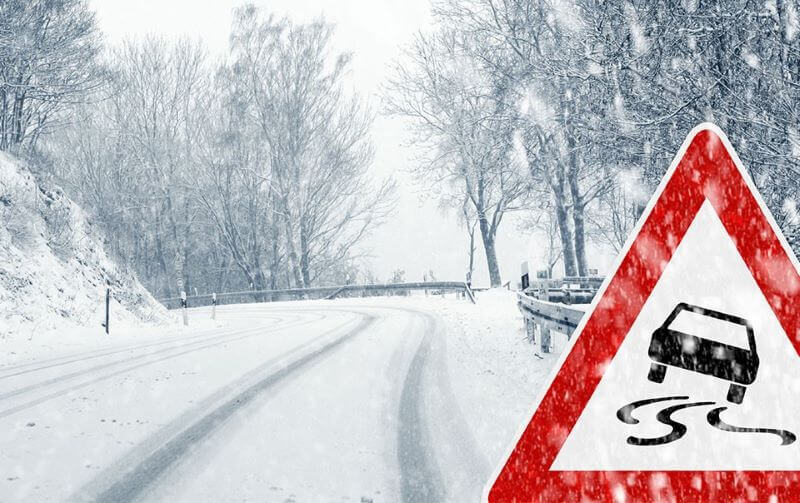
- Black ice: One of the long-standing dangers associated with the winter season is black ice, commonly found below overpasses and bridges. It’s practically undetectable, particularly on asphalt roads. Black ice is a layer of slick ice that covers the street, while piles of white snow mask it immaculately. If you aren’t careful, then your car will slide off the road and crash into other vehicles, pedestrians, or the guardrail. Take notice of winter driving safety tips and tread on black ice carefully.
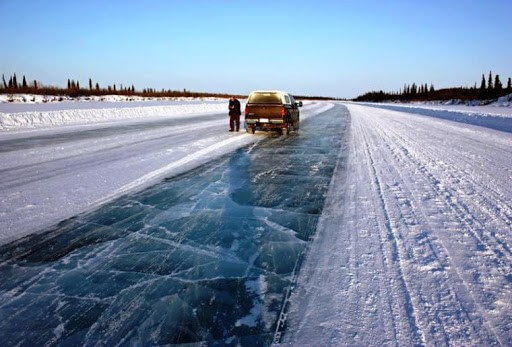
- Avoid braking quickly: During the winter season, roads are not at all suitable for hard braking. Therefore, you should go easy on the brake as well as the accelerator pedal. The road surfaces would be slick, and you won’t have as much control over the automobile as you do during the summer months. Since you’ll need some time to react, you must alter the speed gently because you would not want to skid over ice.

- Vision impairment: Maintain proper visibility of your vehicle at all times during the winter. Obstructed views can be dangerous. Defrosting of the windshield is essential for cleaning up the road residue. The aim is always to maintain your vehicle's full visibility so that other individuals are aware of your actions on the road. Make sure that you get rid of the snow from the headlamps, turn signal lights, and brake lights as well.
Tips for driving safely during the winter
After having an easy run in the prior mild season, most individuals tend to forget that snowfall requires careful attention.
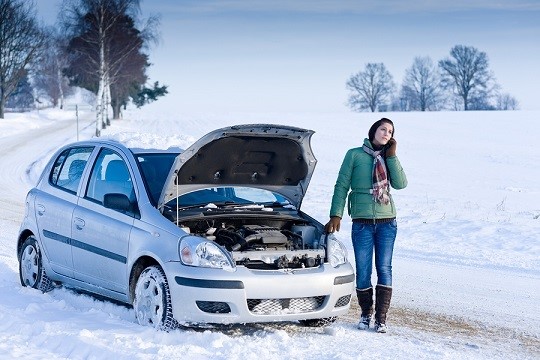
- Run a check: With the drop in temperature, the coolant, wipers, battery, and other systems can take a punch. Before the commencement of snowfall, install snow tires. Clear the dirt accumulation from the windows and ensure that the sensors and headlights and tail lights are in working condition. You should always inspect the tires because tread depth ensures smooth driving.
- Planning your route: You should drive slowly because it is not easy to exercise control on vehicles on snow-laden surfaces. You should leave additional space for cars which are in front. The objective is to have sufficient time in one’s hands so that you can stop your vehicle on time if the necessity so arises. Invest time to find out how your car handles wintry conditions. Check out the weather conditions before heading outdoors so that you can chalk out your route accordingly.
- Have patience: Avoid jerky movements when you are driving in the winter season. Make sure you retain control of the car at all times. Even if a four-wheeler ends up speeding to overtake, you should resist the urge to accelerate. Make slow turns while changing lanes. You should monitor the speed of other vehicles. Too slow a movement may also be risky. Drive at a speed at which you are at ease and can exercise control on the automobile.
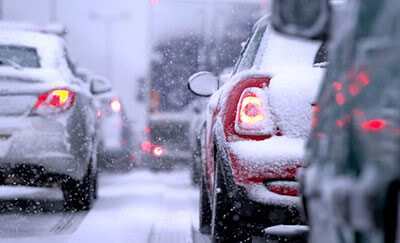
- The drive-train and tires: Different cars have different driving characteristics in winter weather depending on the wheels that drive it. Some vehicles rely on the front wheels, while others rely on the rear wheels. You’ll also encounter automobiles with four-wheel-drive features. Ascertain your car’s driving characteristics to gain better control. You may also consider installing a set of winter-specific tires.
- Keep your eyes peeled: While driving along slippery roads, you should keep your eyes open and stare farther down. Try to anticipate your actions as you approach more slippery areas. Reduce the speed as much as possible as soon as you encounter a curve.
- Go smoothly:The best way to maneuver snow-covered streets is to handle the steering wheel and the pedals as smoothly as you can. Whenever you make a jerky movement, it will affect your controllability. Every action has to be deliberate, gentle, and casual. It’s as if you’re driving your car with a cup of coffee on the dashboard.
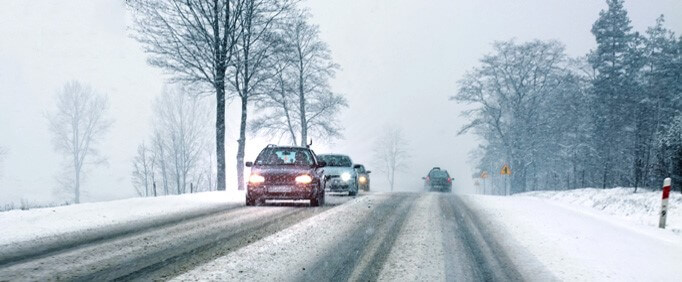
- The flashing lights: Do you know how much traction do you have on a snowy road? An excellent way to assess your situation before getting into trouble is to understand the meaning of that small, amber flashing light among the instrument cluster. If you accelerate in a straight line, and if you spot this light blinking, then you’ll know that it’s a warning sign. Most modern cars have a stability-control system that alerts you when you’re about to slip. So, keep one eye on the road and the other on that light.
- Be ready: Even the most meticulous driver may encounter an accident. If you feel that your vehicle is going to skid off, then you shouldn’t panic too much. Look at where you want to go instead of where the car is taking you. Utilize your peripheral vision to avoid everything that you’re trying to. Racers say that a driver always ends up where he/she keeps his/her fixed. That’s why they often manage to recover from skids.
- Deal with it: Sooner or later, you’ll hit a slick zone and get that queasy feeling in the pit of your belly. After all, the car will begin to slide, and you’ll think that the end is near. However, you must steel your mind and don’t stab the brakes as it will worsen the situation. Just keep the wheels of your automobile pointed in the direction where you have to go while squeezing the brakes gently until the car stops.
- Use your anti-lock brakes: The cars of today have an anti-lock brake system. You’ll recognize it by the abbreviated term called ABS. An onboard computer is in charge of the ABS. If you feel helpless during a skid, press the brakes as hard as you can and let the ABS take care of the rest. The computer will optimize the automobile’s braking system to be as aggressive as possible.
- Location Tracking & Geo-fencing
- App Blocker
- Web Filtering
- Screen Time Control
- Smart Parental Control Setting
Taking a sensible call
As you can see, driving in wintery conditions isn’t safe at all. The best thing to do would be to avoid using your car at all. Then again, it isn’t always a feasible option. That’s why you should be cautious while driving on the road. You will not have access to optimal driving conditions but knowing the safety rules helps. The above winter driving safety tips should be able to help you stay safe while driving in wintery conditions.

Moly Swift
staff Editor